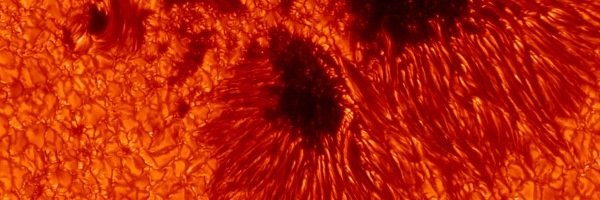
SOLARNET - Integrating High Resolution Solar Physics
Funded by the European Commission, SOLARNET aspires at integrating:
- all group of scientists with complementary expertise in observational techniques, instrumentation, theoretical astrophysics, numerical simulations and modelling.
- the major European research institutions, research infrastructures, and data repositories in the field of high-resolution solar physics.
The main objectives of SOLARNET are:
Foster Networking Activities & Mobility Programs
- integrate small communities and foster European collaboration. The additional participation by private companies and non-European research institutions is expected to maximize the impact on the world-wide scale.
- increase the impact of high-resolution data by offering science-ready data and facilitating their retrieval and usage.
- train a new generation through student schools, a mobility program, and grant program to attend conferences.
- dissemination activities towards society.
Conduct Joint Research Activities
- foster synergies between observational and theoretical research communities by organizing meetings, where each present state-of-the-art methodologies.
- lay foundations for a combined use of synoptic and high-resolution facilities on ground and in space.
- enhance and spread data acquisition and processing expertise to the Europe-wide community.
- develop innovative post-focus instrumentation.
Ensure Access & Research Infrastructures
- realize transnational access to all European users.
- encourage the combination of space and ground-based data by providing unified access to pertinent data repositories.
- develop and build next-generation devices to correct for atmospheric turbulence.
Work packages within SOLARNET with major MPS contribution:
Work package 6: Advanced instrumentation development
6.2 Microlens-fed spectrograph
During the previous SOLARNET and GREST projects, an excellent microlens array (MLA) was designed, built and tested for diffraction limited spectroscopy and spectropolarimetry. The results were very promising, but further steps are needed for integral field instruments to become practical for general use, which will be considerably more challenging than the first step.
While the prototype successfully demonstrated the concept, there is a pressing need for a larger FOV, to capture the full extent of elementary solar structures, following solar features as they move around during their evolution, and to accommodate the pointing accuracy of the telescope. To allow for a larger FOV, the pitch of the array needs to be reduced, while simultaneously the extent of the array needs to be increased, presenting a new challenge in terms of size and accuracy. Additionally, a 30kx30k detector would be required to record the resulting image, which is beyond the scope of this project, so that a field splitting solution in combination with a sensor mosaic will be studied. The handling and reduction of data from a focal plane array of 30kx30x requires a new strategy regarding data flow, storage, and transport, as well as instrument calibration and image restoration. New software and data handling procedures need to be developed to reduce the data accurately and in a reasonable amount of time.
The hardware development will consist of a large MLA with a much smaller pitch, and an appropriately sized field splitter. The previous experience with the smaller device will be fundamental to define the accuracy requirements for the optical elements. The output of the MLA will be re-imaged and its stability will be studied.
The development of the data handling and reduction tools will focus predominantly on the intricacies of the calibration of MLA spectrographs, and how to integrate that information in the restoration process. Particular focus will be made on the possible adverse effects of field splitting on the data uniformity and quality, and potential solutions to remedy these.
Work package 9: Trans-National Access Program
Infrastructure: SUNRISE 3
The SUNRISE Observatory (see the special volume of Solar Physics, Barthol et al. 2011) is a balloon-borne solar observatory that operates in the stratosphere (at heights up to 40 km) in order to avoid image degradation due to turbulence in the Earth’s lower atmosphere and to gain access to the UV spectral range. The first science flights of SUNRISE, in June 2009 and June 2013, occurred at very low and at high solar activity. The analysis of the data has already changed our view of solar magnetism: even the seemingly least active parts of the solar atmosphere are pervaded by large amounts of magnetic flux in constant dynamical interaction with the convective motions. The first two flights of SUNRISE have resulted in over 80 publications from institutions across Europe (including Germany and Spain) and the USA. The Sunrise 2 papers have appeared as a special issue in the Volume 229, 1 (March 2017) of ApJ Suppl. Series.
SUNRISE 3 will carry two new instruments as well as upgrades of its present instruments. The new instruments are the novel UV spectropolarimeter SuSI (MPG PI- ship) and a near-infrared spectropolarimeter (a joint project of MPG, CSIC-IAA in Spain, and led by JAXA Japan). SuSI will explore and exploit the exciting, but so far little studied, spectral range between 300 and 430 nm. The imaging magnetograph IMaX will be upgraded to greatly increase its cadence and to allow it to access multiple spectral lines (compared with a single one so far).
The launch is scheduled in 2021. The instruments will acquire data during the balloon flight, estimated to last about 120 hours. There is a low risk that the launch will be delayed or that the instrumentation does not work perfectly after launch.
Services currently offered by the infrastructure: The success of the previous two flights shows the huge potential of the SUNRISE approach. The transnational access offered by SOLARNET gives the possibility of using up to 11 hours of observations with the excellent and unique instruments aboard SUNRISE 3. The higher cadence and longer observing periods will enable the study of waves in the solar atmosphere and local helioseismology. Being an experiment scheduled in2021, details about proposal preparation and execution are not yet fully elaborated by the scientific team of SUNRISE.











